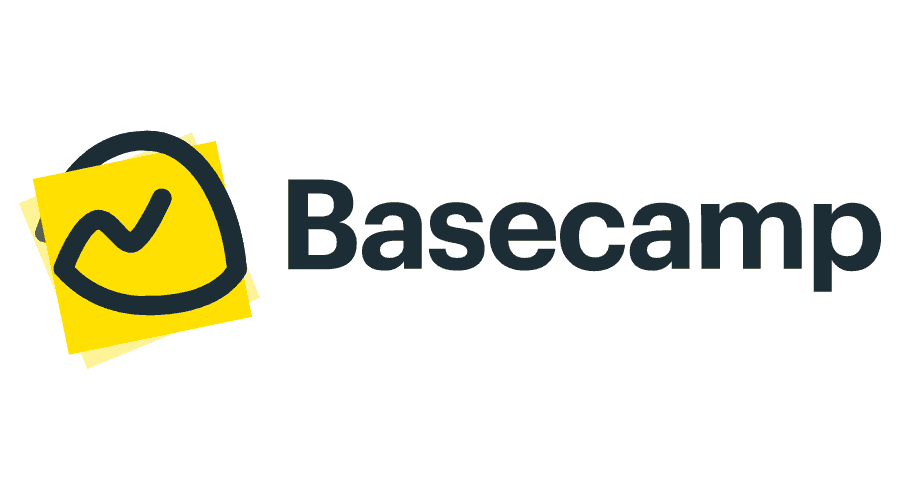Virtual Collaboration Software is a type of application that enables individuals or teams, who may be geographically dispersed, to work together on shared tasks or projects in a virtual environment. It incorporates features such as video conferencing, real-time data sharing, instant messaging, screen sharing, digital whiteboards, and project management tools. This software facilitates effective communication, seamless collaboration, and efficient workflow among team members regardless of their physical location. The use of virtual collaboration software has become particularly significant in remote work setups, enabling businesses to maintain productivity and enhance teamwork globally.
The Best Products
Virtual Collaboration Software: Our Recommendations
Pick #1
Slack
Slack is a virtual collaboration software primarily used by teams for instant messaging, file sharing, and direct communication. It provides a platform where users can create and organize work in separate channels for subjects, projects, or teams. With options for voice or video calls, including screen sharing, it further enhances collaborative efforts. Slack also comes with advanced features that allow for integration with other apps and services such as Google Drive, Trello, and GitHub, allowing teams to streamline workflows and improve productivity within a single workspace.
Pick #2
Microsoft Teams

Microsoft Teams is a virtual collaboration software that provides a platform for businesses and organizations to streamline communication, collaboration and workflow management. It encompasses functionalities for video and audio conferencing, instant messaging, file sharing, screen sharing and integration with a host of other Microsoft and third-party applications. Microsoft Teams is designed as a hub where team members can work together by creating and editing documents, scheduling meetings, managing tasks and facilitating synchronous or asynchronous communication, regardless of their geographical location. Thus, it fosters a unified and efficient work environment in the digital space.
Pick #3
Zoom

Zoom is a cloud-based video conferencing and virtual collaboration software that enables real-time online communication and collaboration. Used in both professional and personal settings, Zoom allows users to conduct online meetings, webinars, live chats, screen sharing, and video calls. Offering services like breakout rooms for smaller group discussions, virtual backgrounds, and meeting recording, it allows users to connect and interact despite geographical barriers. It’s often used for distance education, remote work, social relations, or for any other scenario that requires instant face-to-face communication over the Internet.
Pick #4
Asana

Asana is a top-rated virtual collaboration software that facilitates team-based work management. It enables teams to organize, track, and manage their work comprehensively, enhancing productivity and efficiency. With versatile features like task assignments, progress tracking, deadlines, and multiple project views, Asana promotes transparency and seamless communication within teams. Additionally, it integrates with a host of other software tools, optimizing workflow across varied applications. Its interface is user-friendly and customizable, making it an ideal solution for businesses looking to streamline their project management processes digitally.
Pick #5
Trello

Trello is a versatile virtual collaboration software that offers a visual way to manage projects and tasks. It leverages the concept of boards (for projects) and cards (for tasks), allowing team members to collaborate, organize and prioritize projects in a flexible and rewarding way. Trello operates in real-time and is equipped with numerous integrations, enabling efficient communication and tracking of project progress. It’s suitable for businesses of all sizes and across various industries, providing a clear, comprehensive view of tasks, deadlines, assignments and much more.
Pick #6
Google Workspace

Google Workspace, formerly known as G Suite, is a robust suite of cloud-based productivity and collaboration software tools developed by Google. It encompasses a variety of applications including Gmail, Google Drive, Google Docs, Sheets, Slides, Google Calendar, and Google Meet among others, providing versatile solutions for communication, documentation, data storage and video conferencing. As a virtual collaboration software, it enables real-time collaboration in a remote environment, making it possible for individuals and teams to seamlessly work together regardless of their location. Its interoperability and accessibility from any device with internet access make it a vital tool in today’s digital work space.
Pick #7
Miro

Miro is a leading virtual collaboration software designed to enable teams to work seamlessly together regardless of location. It provides an intuitive, easy-to-use digital whiteboard where users can share ideas, brainstorm, strategize, manage tasks, and design online. Miro facilitates real-time collaboration with features such as sticky notes, freehand drawing, pre-built templates, video conferencing and more. With its robust integration capabilities with popular platforms like Slack, Google Drive, Zoom, it aids businesses in fostering productivity, innovation, and engagement across remote teams.
Pick #8
Jira

Jira is a powerful virtual collaboration software developed by Atlassian that allows teams to plan, track, manage and release software. It is a popular project management tool used by Agile teams for bug tracking, issue tracking, and workflow management. With functionalities like Scrum and Kanban boards, roadmap planning, and custom reporting, it promotes transparency in project progression and team productivity. It also offers vast integration possibilities ranging from communication platforms to code repositories, enabling a comprehensive environment for collaborative software development.
Pick #9
Monday.com

Monday.com is a cloud-based project management and team collaboration software platform that helps teams orchestrate their work, from small tasks to strategic initiatives. It offers highly customizable features that allow teams to plan, track, and manage workflows, tasks and projects in a visual, easy-to-use interface. It supports integration with other popular tools like Google Drive, Slack and more, making team collaboration more efficient. Monday.com is data-centric, enabling users to make data-driven decisions, and its automation capabilities minimize manual work, increasing productivity.
Pick #10
Basecamp

Basecamp is a popular virtual collaboration software designed to facilitate project management and team communication. It offers a centralized platform where teams can assign tasks, share files, communicate through message boards, schedule activities and set deadlines. It streamlines the process of remote team collaboration, making it easier for everyone involved to get a snapshot of the project’s progress. With features like in-app notifications, email integration, and third-party app compatibility, Basecamp aims at increasing productivity, reducing email clutter, and ensuring every team member is on the same page, regardless of their geographical location.
Virtual Collaboration Software: Key Features
Virtual collaboration software has revolutionized the way teams communicate, plan, and execute projects, regardless of the geographical distances between them. Its key features include robust communication tools such as instant messaging, video conferencing, and real-time document collaboration, enabling seamless interaction as if everyone were in the same room. This technology supports a synchronized work environment, allowing for immediate feedback and collective brainstorming, fostering a highly interactive and proactive team dynamic.
Moreover, project management functionalities integrate seamlessly within these platforms, offering tools for task assignment, progress tracking, and deadline management, thus ensuring that projects stay on course. Another essential feature is the ability to share and collaboratively edit files in real time, which significantly eliminates the confusion and delays associated with version control and document sharing. Virtual collaboration software, with its comprehensive suite of tools, addresses the core needs of remote and hybrid teams, facilitating a productive, efficient, and connected work environment.
Buying Criteria
Selecting the ideal virtual collaboration software for your team can be a pivotal decision ensuring seamless communication and productivity in a remote working environment. Begin by assessing your team’s specific needs and challenges. Prioritize features like real-time communication, document sharing, project management capabilities, and user-friendliness. A platform that integrates easily with tools your team already uses can enhance workflow rather than disrupting it. Consider the scalability of the software, ensuring it can grow with your team and adapt to future technological advancements.
Security is paramount when choosing virtual collaboration software. Look for robust data protection measures, including encryption and secure authentication processes, to keep your communications and documents safe from unauthorized access. Evaluate the software’s customer support and training resources to ensure your team can quickly overcome any technical challenges. Getting feedback from your team members on the software’s trial version can provide practical insights into its usability and effectiveness in your unique working environment. A thorough evaluation will lead you to a solution that not only meets your current requirements but also supports your team’s evolving collaboration needs.
Benefits
Investing in a virtual collaboration software becomes a strategic move when a business operates across multiple locations or embraces remote work. This technology enables teams to communicate, share files, and manage projects seamlessly, regardless of physical distances. It is particularly beneficial for organizations looking to enhance productivity, foster innovation through collective brainstorming sessions, and maintain a strong team connection. The centralized platform provided by such software helps in streamlining processes and ensures that every team member stays on the same page, significantly reducing the chances of miscommunication and project delays. Therefore, for companies prioritizing agile workflows and aiming to cultivate a collaborative work culture, virtual collaboration software is a worthy investment.
On the other hand, opting not to invest in a virtual collaboration software might be sensible for businesses with a strong emphasis on in-person interactions and those operating in a localized setting. For small teams that can easily coordinate face-to-face and where project scopes do not require frequent real-time collaboration, the cost of such software might not justify the benefits. Additionally, companies with stringent data security policies may find the external platforms pose a potential risk to sensitive information. In scenarios where technology adaptation among employees is low, or the nature of work does not support virtual collaboration, choosing not to invest in these tools can save resources and focus efforts on more tangible improvements or alternative solutions better aligned with the company’s operational needs and culture.
Popular Questions
What is Virtual Collaboration Software?Can we share files with Virtual Collaboration Software?How does Virtual Collaboration Software improve productivity?Is the software secure?Can all sizes of businesses use Virtual Collaboration Software?
Virtual Collaboration Software is a type of program that enables individuals or teams to work together remotely, by providing tools for communication, project management, file-sharing, and so on. These programs are designed to replicate the experience of physical team interaction in a digital space, making them essential tools for remote work.
Yes, most Virtual Collaboration Software allows users to share files, documents, and other data. This feature helps to distribute resources among team members and keeps every project’s material in one accessible place. It also maintains a record of changes made to shared documents.
Virtual Collaboration Software improves productivity by facilitating clear and consistent communication between team members. The software also includes features like task assignment, status updates, project management tools, etc., thus streamlining project organization and execution. This minimizes the time spent on coordination and increases the time spent on core tasks.
Yes, most Virtual Collaboration Software has security measures in place including encryption and user authentication to ensure that only the right people have access to the information within. However, the level of security might differ from software to software. Therefore, it is always good to review the vendor’s security policies before making a decision.
Yes, Virtual Collaboration Software is designed to be scalable and can be used by organizations of all sizes, from small start-ups to large corporations. The software typically offers various plans so you can choose what fits your business needs best. Scalability ensures that as your business grows, the software grows with you.

